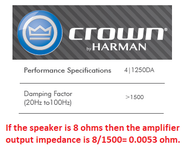preeti.kr
Newbie level 5
Hello all,
I have a analog potentiometer 100k which is used to control the volume of speaker. The flow is : Amplifier, volume control, speaker.
I am planning to convert this POTENTIOMETER Solution into digital .
But i m confused if any digital equivalent of potentiometer equivalent component is there ??
The potentiometer module in use is marked15 watt. Please share your comments if this is feasible.
I have a analog potentiometer 100k which is used to control the volume of speaker. The flow is : Amplifier, volume control, speaker.
I am planning to convert this POTENTIOMETER Solution into digital .
But i m confused if any digital equivalent of potentiometer equivalent component is there ??
The potentiometer module in use is marked15 watt. Please share your comments if this is feasible.
